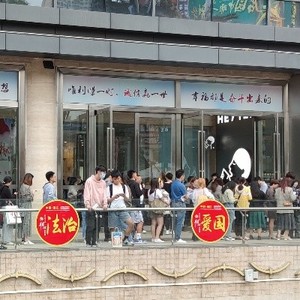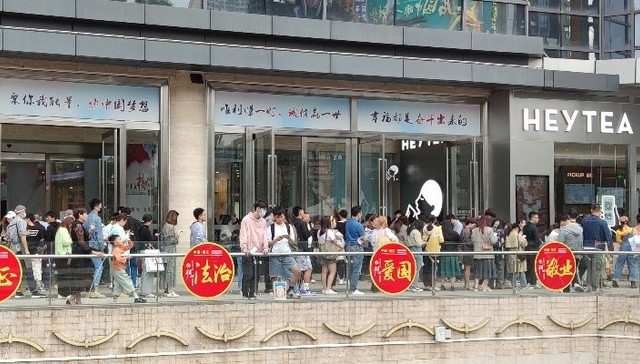By LU Yibei
HeyTea, a popular bubble tea chain, may be facing a market as frothy as the cheese tea it is credited with inventing.
Since last year, rumors of HeyTea’s IPO, often sounding quite plausible, have been flying. On March 30, a domestic news outlet reported that the company had “officially” kicked off its Hong Kong IPO and that major investment banks have been working on the upcoming roadshow.
Rumors intensified recently when competitor Nayuki filed for a Hong Kong listing. This latest round of gossip has barely drawn breath when CEO Nie Yunchen broke his customary silence to deny the report, writing on social media. “Let me clarify once and for all that we have no plan to go public this year.”
Lab experiments

To be clear, HeyTea has never shied away from the capital. It raised 100 million yuan (US$16 million) in a Series A round led by IDG Capital in 2016, only four years after the then 21-year-old Nie opened his first bubble tea joint in a small southern city. Since then, the brand has been the darling of venture capital funds. Last March, it closed a Series C round of funding at a 16-billion-yuan (US$2.3 billion) valuation.
Capital injections have fueled HeyTea’s exponential expansion. The number of stores has doubled every year since 2016 and the company shows no sign of slowing down. In 2020, an average of 30 HEYTEA stores opened every month taking the total number of stores to close to 700.
This doesn’t mean that HeyTea just grabs available commercial spaces indiscriminately. Even the best locations come with a catch. Beverage chains, including Starbucks and Naixue, usually open next to each other around areas with heavy foot traffic, which escalates the demand for prime spots. HeyTea’s real estate strategy is to diversify with three types of stores: the typical 150-square-meter cafe, HeyTea GO for takeout, and more recently, HeyTea “Labs” each with different decors and aesthetic styles. Some stores monochromatically scheme, some adopt trendy themes tailored to their home cities’ cultural traditions.
Labs currently make up about 10 percent of stores and were created to strengthen brand image and compete for younger customers. Another 25 percent are HeyTea GOs, often located in office buildings and busy malls. The concept was launched in 2019 and 200 GOs opened in less than two years. Quick expansion is expected to continue – they are cheap, simple to operate, and thus more profitable.
No time to line
The company has also digitized quickly, with 80 percent of customers ordering online and picking up in store. Only about 25 percent of orders are delivered.
Nie told Jiemian News in an earlier interview that expansion wasn’t due to pressure from investors: “We want to continue to be a premium brand while reaching out to the mass market. Given that we can balance the two, I don’t mind growing fast.”
In fact, investors have expressed concern about overexpansion, but Nie has run HeyTea with an iron fist since day one - he “can’t imagine” relinquishing control – and refuses to slow down. Even so, he said, not the least concerned about humblebragging. HeyTea apparently still could not deal with the speed at which lines formed so the sensible solution was to open more stores.
Whatever the true motivations are, HeyTea needs money, a lot of it. It has so far raised over US$95 million in six rounds of fundraising, so the natural move, the market reckons, can only be public funding.





